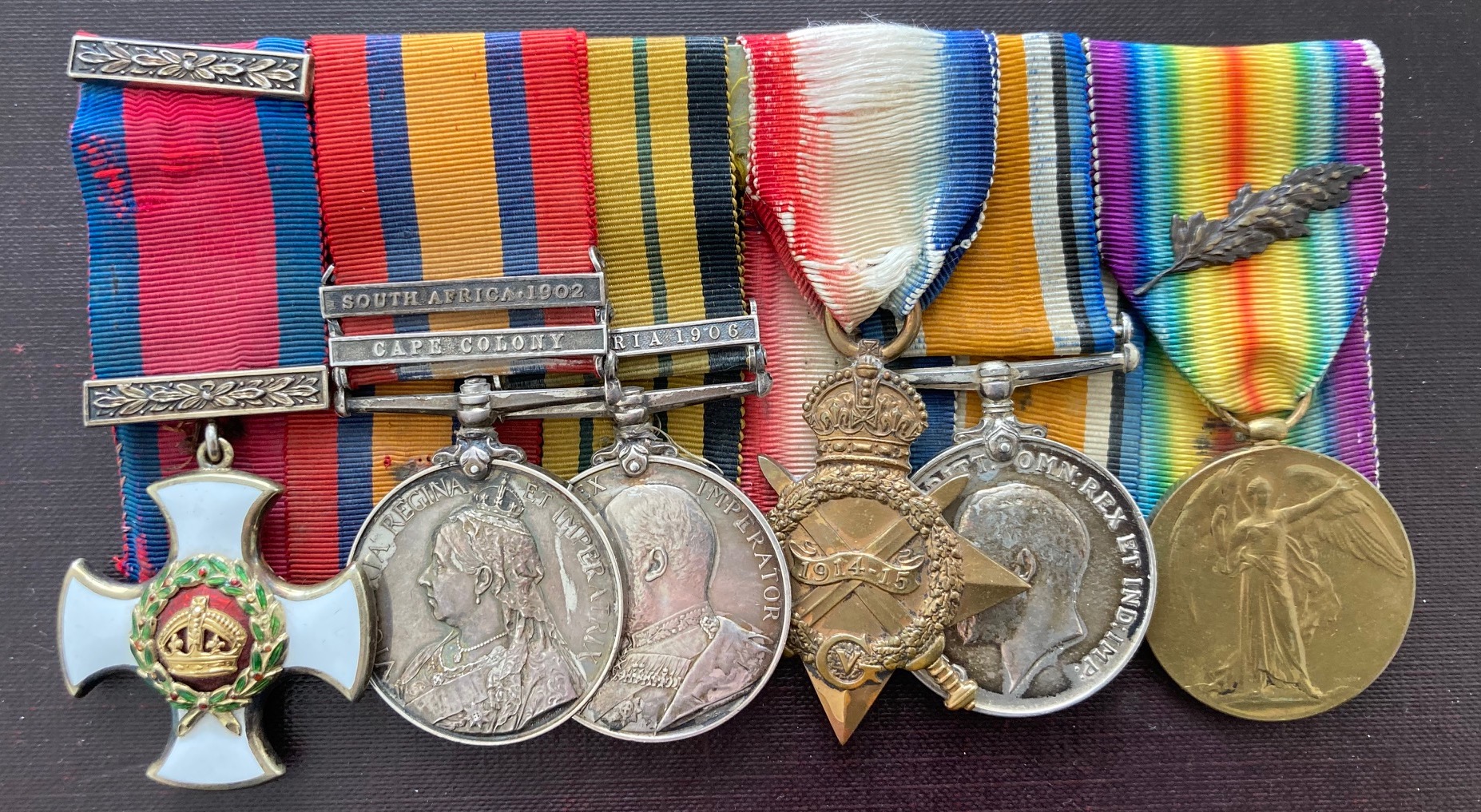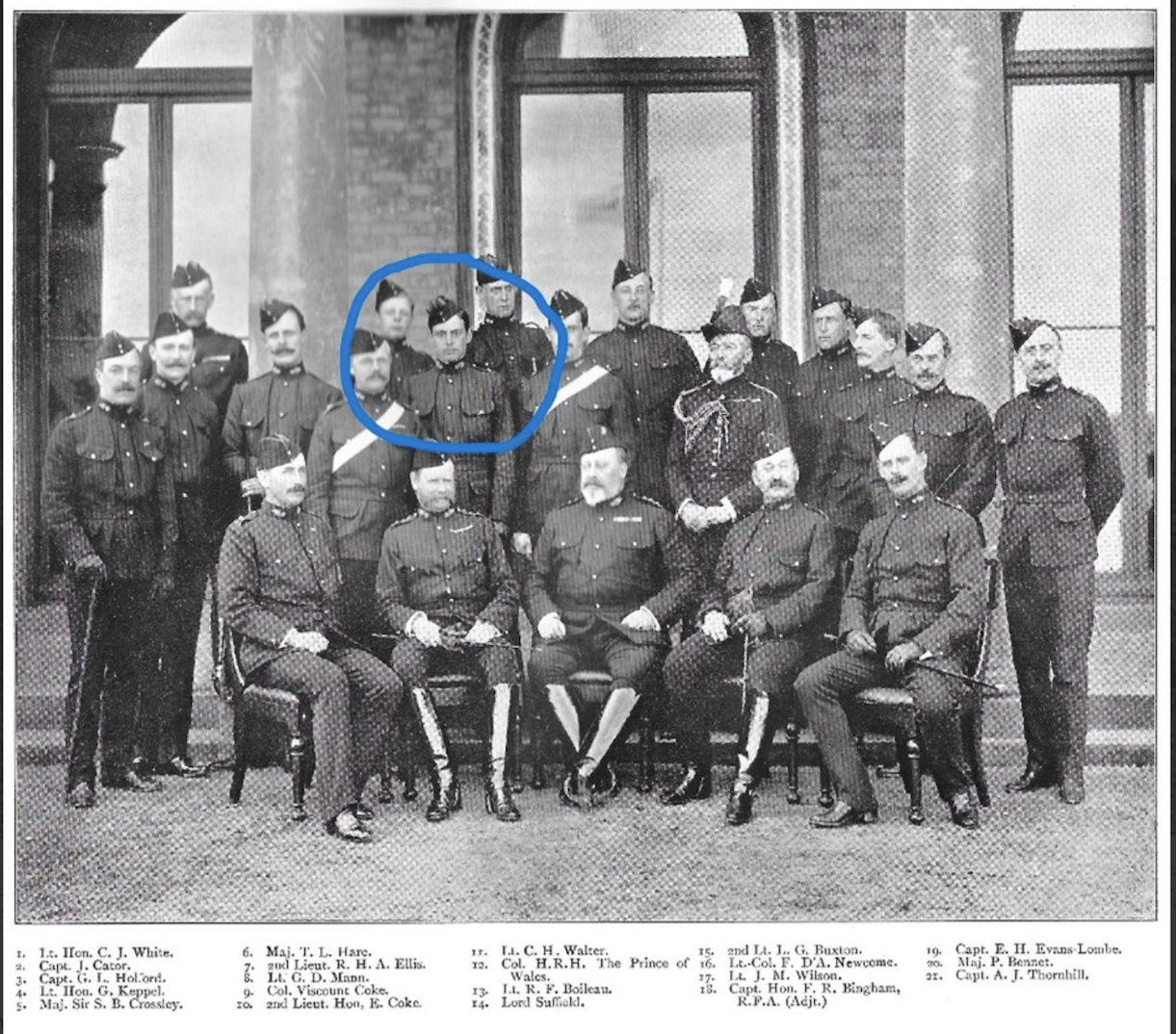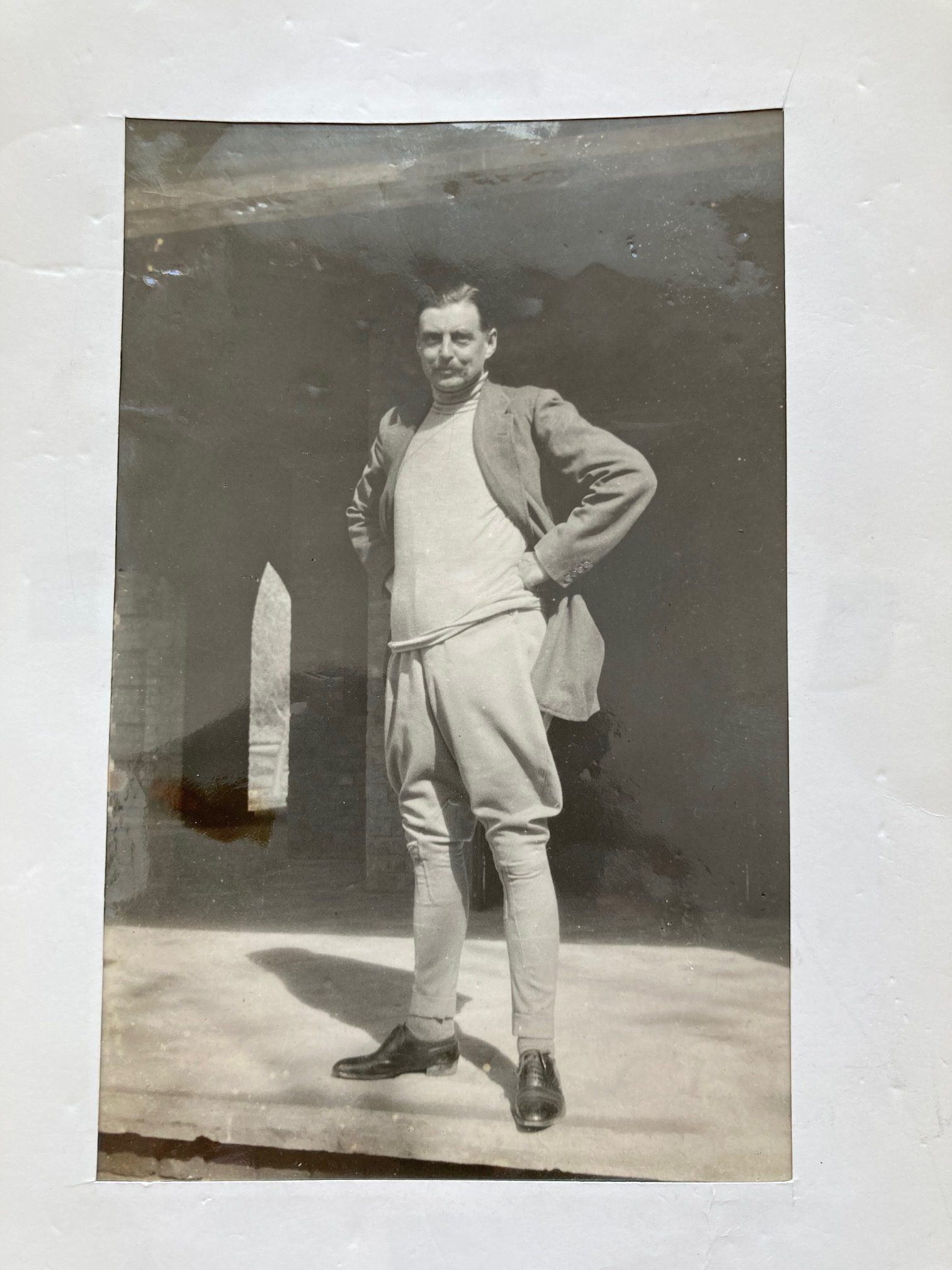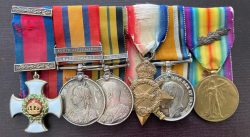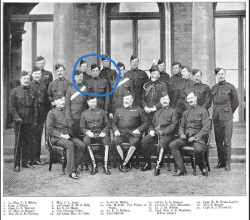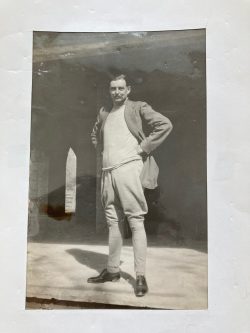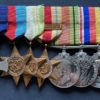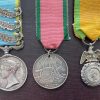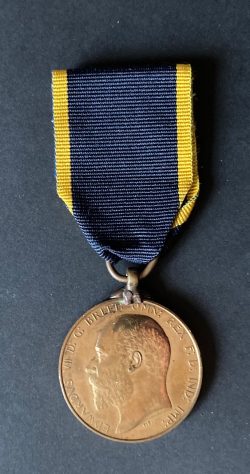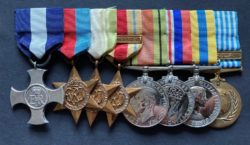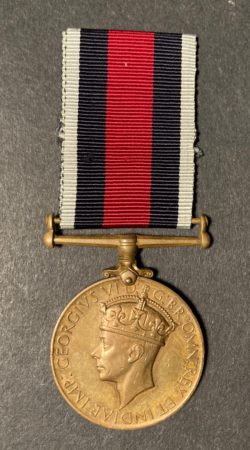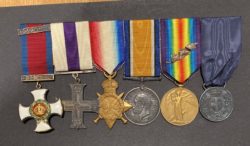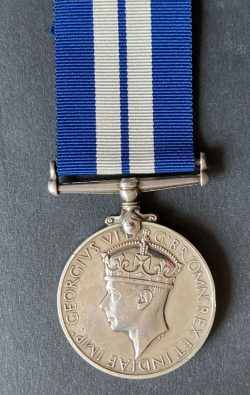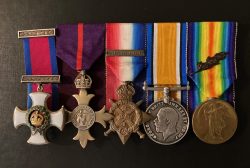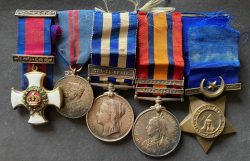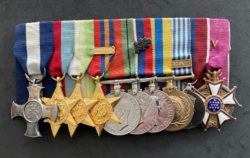Cameroons 1914-15’ D.S.O. group with QSA & AGS Northern Nigeria 1906, Brigadier-General G. D. Mann, Irish Horse, Imperial Yeomanry, Royal Artillery, attached West African Frontier Force, in command of Artillery in Northern Cameroons 1915, subsequently commanded the Nigerian Brigade in East Africa
£3,200.00
Out of stock
Distinguished Service Order, (GV), silver-gilt and enamel, Queen’s South Africa , 2 clasps, C.C., S. A. 1902 (Lieut: , Imp: Yeo:) (1902 clasp a tailor’s copy), Africa General Service, clasp, N. Nigeria 1906 (Lieut:. R.F.A.), 1914-15 Star (Major, R.F.A.), British War and Victory Medals, with M.I.D. oak leaves (Brig. Gen.)
mounted court-style as worn ribbons a little frayed,
Brigdier General G.D. Mann
D.S.O. London Gazette 14 January 1916.
M.I.D. LL.G. 31/5/1916 (Cameroons), and 7/3/1918 (East Africa).
George Duncan Mann was born on 28 August 1876, son of Horace and Mina Mann. Educated at Repton, he was gazetted 2nd Lieutenant in the Norfolk Artillery Militia on 12 April 1898. He then joined the Royal Artillery on 5 May 1900, Lieutenant on 1 May 1901, Major on 30 October 1914, T/Brigadier-General on 19 October 1917.
Served in the South African war in 1902 with the 132nd Company (Irish Horse) Imperial Yeomanry (Queen’s Medal with 2 clasps). He was employed with the West African Frontier Force from 1905 to 1909, and served in West Africa (N. Nigeria) in 1906 (Medal with clasp). He was again employed with the W.A.F.F. from 1911 to 1918, and entered the Cameroons theatre of war on 24 August 1914, commanding the Artillery in the Northern Cameroons in 1915 (Despatches). Mann then commanded the column operating from Ibi, on Banzo and Jaundi, from July 1915 to February 1916; commanded Nigerian Brigade in all fighting, from October 1917 to February 1918; and commanded British Troops south of the Rouma River, in Portuguese East Africa, from December 1917 to February 1918
Two of his brothers were killed in action, one in 1915, and the other in 1916, and his fourth brother was wounded.
Sold with original warrant for the D.S.O. and a photograph of the recipient in civilian wear plus a copy group photo with the Norfolk Artillery
